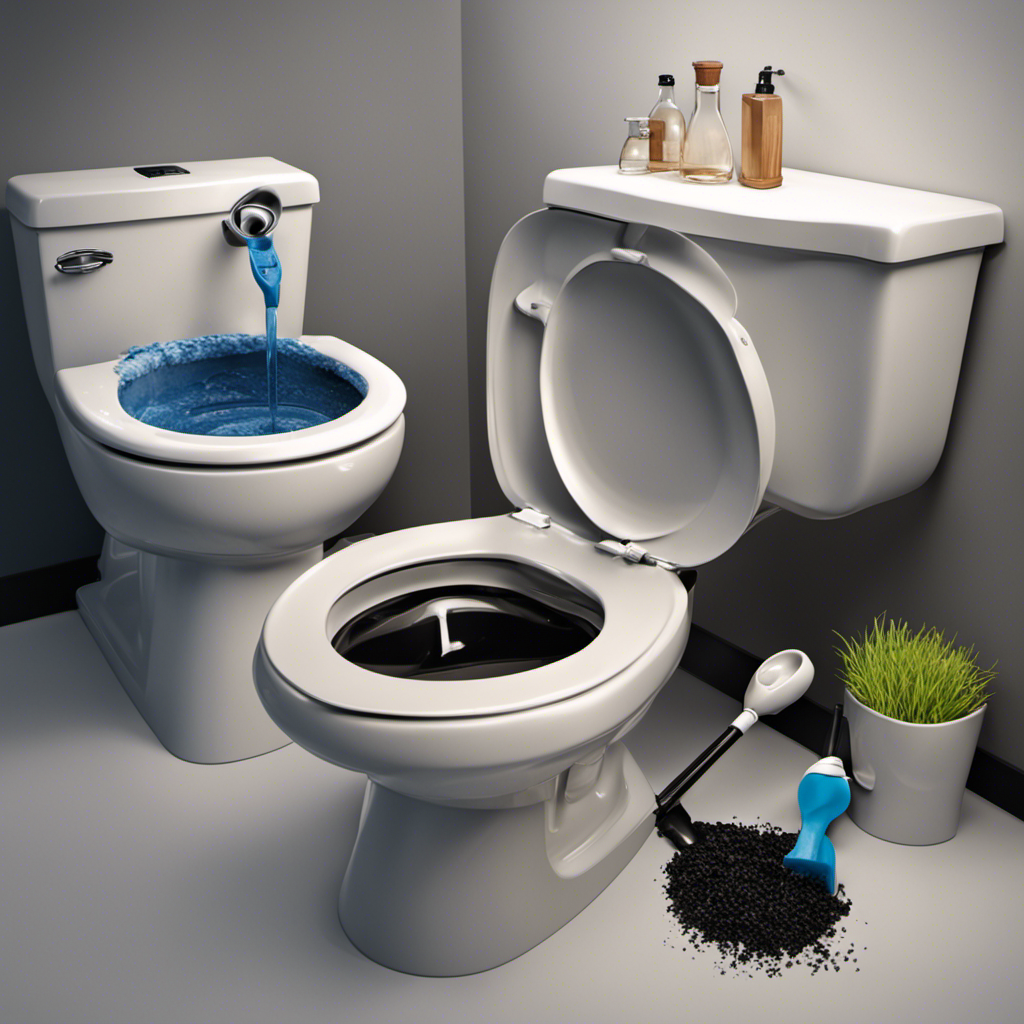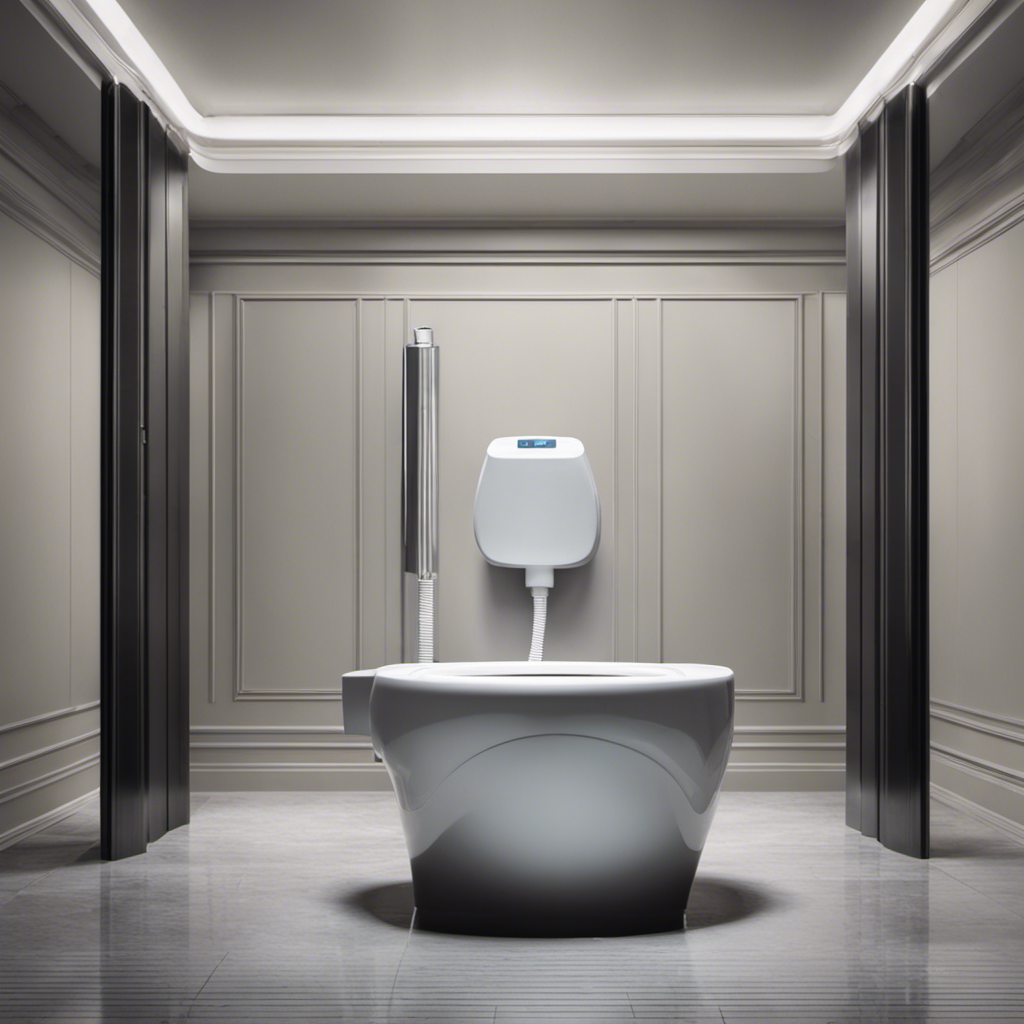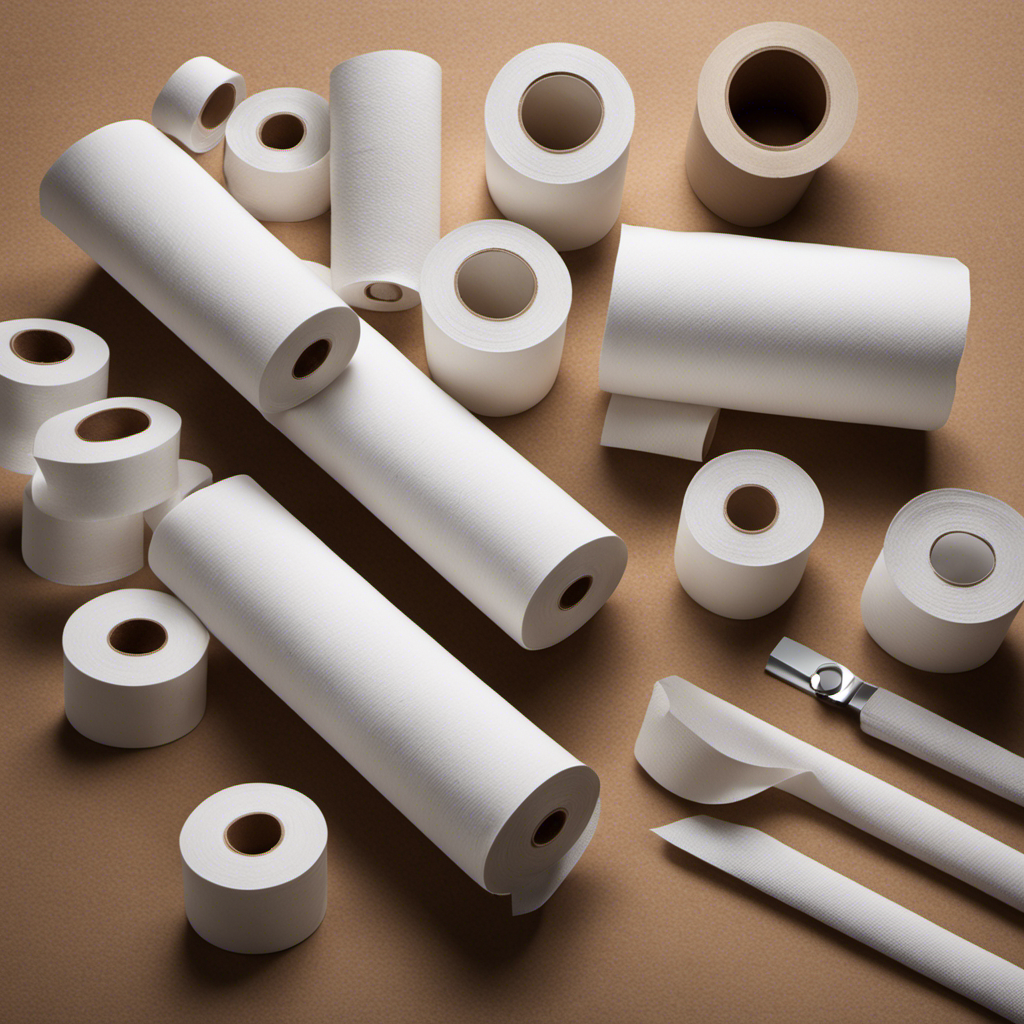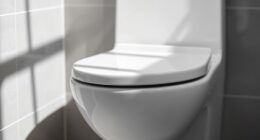Ever wondered how to efficiently remove water from a toilet? Well, look no further! In this article, I will guide you through the step-by-step process of eliminating water from your toilet using simple tools and techniques.
Have you ever found yourself in a situation where your toilet is overflowing with water and you don’t know what to do? Well, worry no more! I will provide you with the necessary information and instructions to tackle this issue effectively.
Key Takeaways
- Assess the water level in the toilet bowl to determine if it is close to overflowing.
- Shut off the water supply by locating and turning the water valve clockwise.
- Use towels or absorbent pads to soak up excess water and prevent water damage.
- Remove water from the toilet bowl using a plunger or a wet-dry vacuum.
Assess the Water Level
You need to first check if the water level in your toilet is too high. To do this, locate the water valve behind the toilet and turn it off by twisting it clockwise. This will prevent any additional water from entering the toilet bowl.
Next, take a moment to assess the level of water in the bowl. If it is close to overflowing, you may need to act quickly to prevent any potential damage.
To remove excess water, grab a few towels and carefully place them around the base of the toilet. Gently press down on the towels to absorb the water. Be sure to keep an eye on the water level as you remove it, ensuring that it does not rise above the towels.
Gather Necessary Tools and Supplies
Before starting, make sure you have all the necessary tools and supplies gathered. Toilet water removal can be a messy and unpleasant task, but with the right tools, it can be done efficiently. Here are three items you will need:
-
Bucket or shop vacuum: A sturdy bucket or a shop vacuum with a wet/dry function is essential for removing the water from the toilet bowl. Make sure the vacuum can handle liquids to avoid any damage.
-
Rubber gloves and protective clothing: It is crucial to protect yourself from any potential contaminants in the toilet water. Rubber gloves and protective clothing will shield you from harmful bacteria and viruses.
-
Towels or absorbent pads: To prevent water damage and minimize the risk of mold growth, have plenty of towels or absorbent pads on hand. These will help soak up any excess water and prevent it from spreading to other areas.
Shut Off the Water Supply
To prevent any further water flow, it’s important to shut off the water supply before beginning the task. Start by locating the water valve, usually located behind or near the toilet. Turn the valve clockwise to shut off the water supply. This will stop the flow of water into the toilet tank and prevent any spillage during the removal process.
Once the water supply is shut off, you can proceed with removing the water from the toilet bowl. Grab a bucket and carefully scoop out the water, being mindful not to spill any on the floor. It’s important to remove as much water as possible to make the subsequent steps easier and cleaner.
Use a Plunger to Remove the Water
Once the water supply is shut off, it’s time to grab a plunger and start removing the excess water from the bowl. Here are three steps to properly use a plunger and avoid common mistakes:
-
Position the plunger: Place the rubber cup of the plunger over the drain hole in the toilet bowl, ensuring a tight seal. Make sure the entire cup is submerged in water to create a good suction.
-
Use proper technique: Hold the handle firmly and push down on the plunger with a quick, forceful motion. Then, pull up sharply to create suction and break the clog loose. Repeat this plunging action several times until the water starts to drain.
-
Avoid common mistakes: Don’t plunge too forcefully, as it may splash water everywhere. Also, avoid lifting the plunger from the drain hole while still submerged, as it can break the seal and reduce suction.
With the excess water removed, it’s time to transition into the subsequent section on how to utilize a wet-dry vacuum for further cleaning.
Utilize a Wet-Dry Vacuum
With the wet-dry vacuum, you can easily suck up any remaining liquid from the bowl.
When using a wet-dry vacuum to remove water from a toilet, it is important to take certain safety precautions. First, make sure to unplug the vacuum before attempting to remove any water. This will prevent any electrical accidents. Additionally, wear rubber gloves to protect your hands from any potential contaminants in the water.
When using the vacuum, be mindful of the water level to avoid overfilling the machine. To remove the water, simply insert the vacuum hose into the bowl and turn on the machine. Slowly move the hose around to ensure all the water is sucked up.
If you don’t have a wet-dry vacuum, there are alternative methods to remove water from a toilet. One option is to use a bucket or container to manually scoop out the water. Another option is to use a siphon, which involves using a hose to create a vacuum and drain the water.
Conclusion
In conclusion, removing water from a toilet can be a simple task if you follow the right steps. By assessing the water level and gathering the necessary tools, such as a plunger and wet-dry vacuum, you can effectively remove the water.
One interesting statistic to note is that according to a study conducted by the Environmental Protection Agency, a leaking toilet can waste up to 200 gallons of water per day. Therefore, it’s important to address any water issues promptly to conserve water and save on your water bills.










